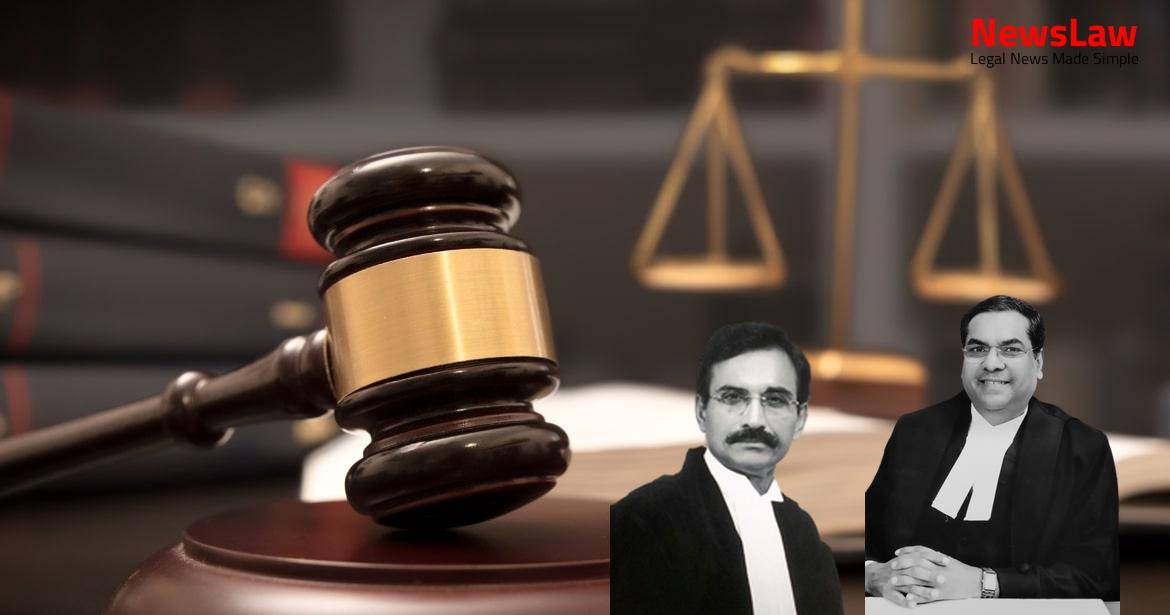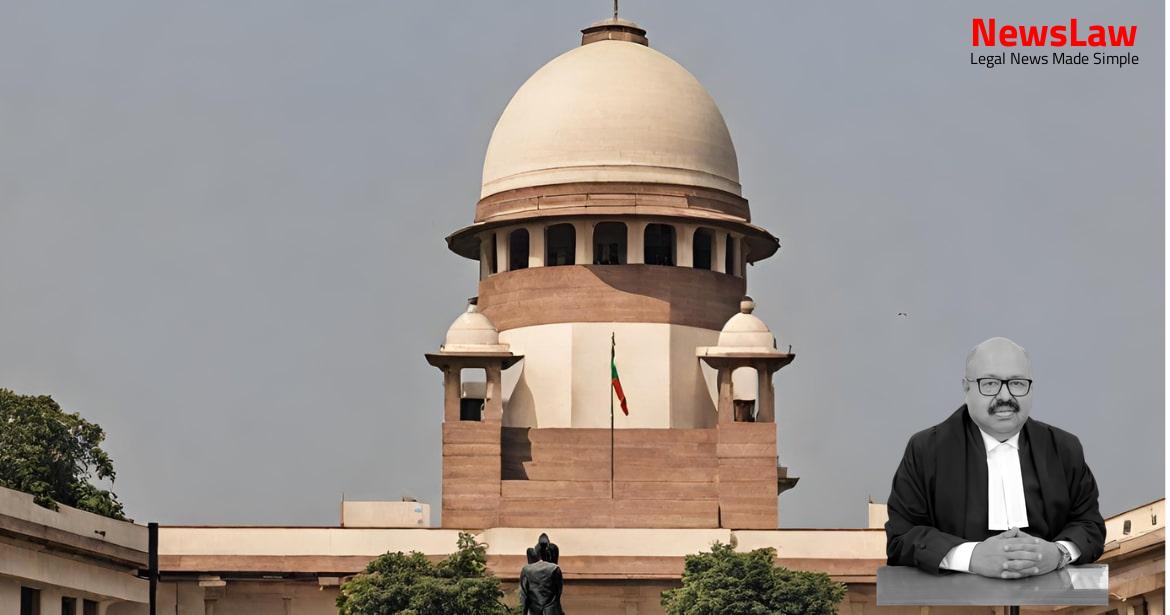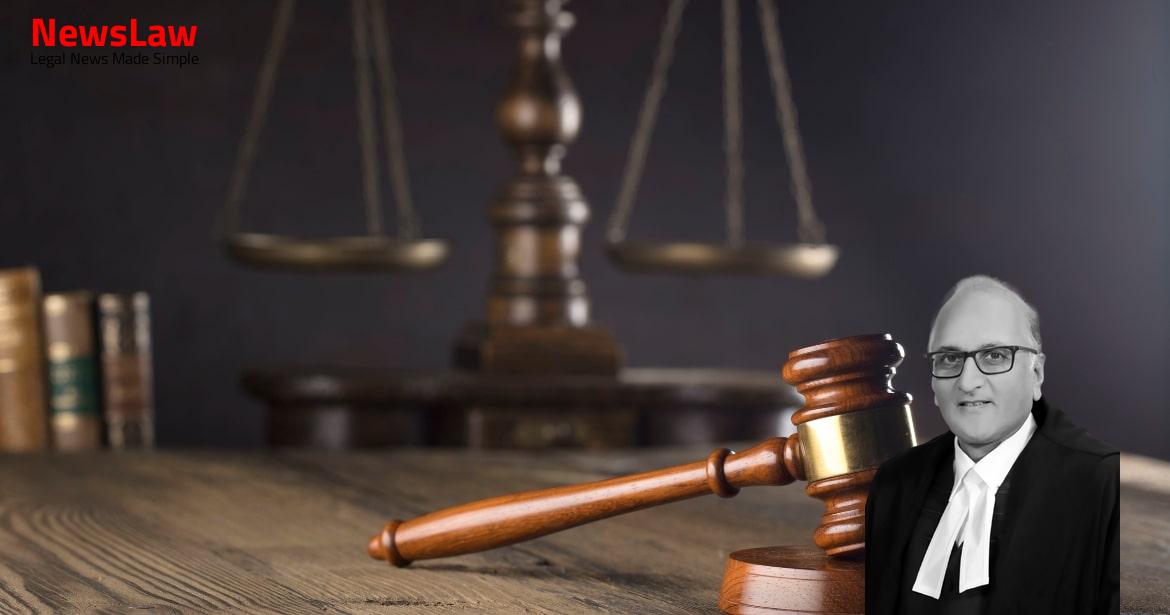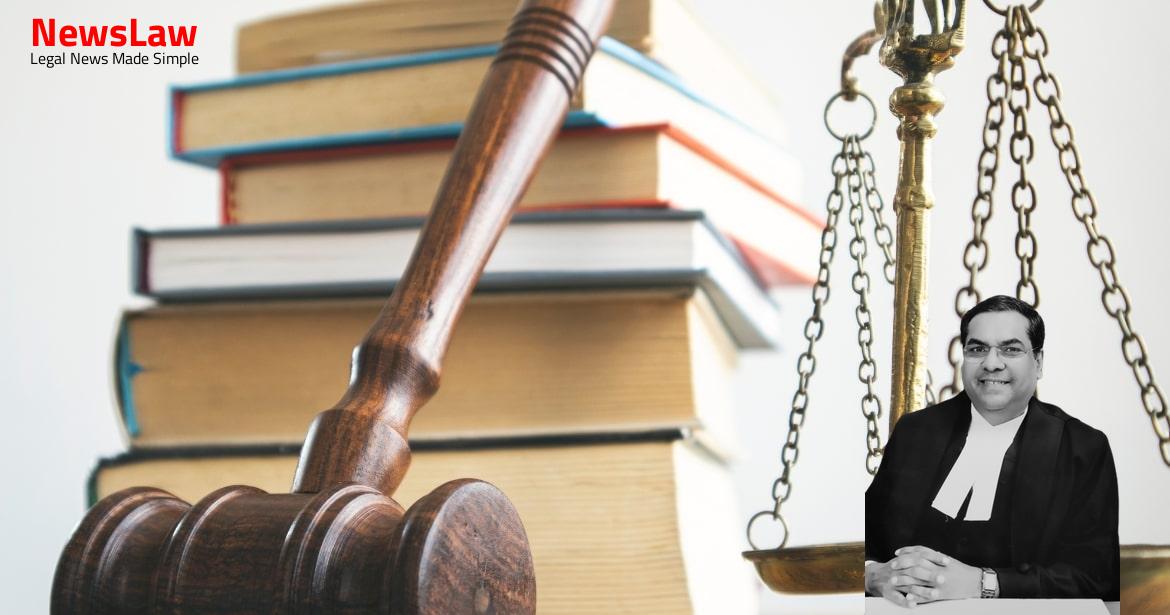In a recent legal case revolving around partnership deeds, the court’s meticulous analysis of the intricate clauses and provisions has sparked discussions in legal circles. The case highlights the importance of written agreements, the prohibition on proving contrary terms, and the significance of clarity in defining terms. Let’s explore the nuances of partnership agreements through the lens of legal interpretation in this compelling case.
Facts
- Partnership firm reconstituted through Partnership Deed dated 30.10.1992 with plaintiff No.1 and defendants 1 to 5 as partners.
- Partnership further reconstituted through Partnership Amendment Deed dated 18.8.1995 with plaintiff No.2, son of plaintiff No.1, and defendants 6 to 11 as partners.
- Capital contributions of partners as per the Deed of Agreement.
- Dispute arises between plaintiffs and defendants regarding profit share percentages.
- Plaintiffs demand accounts and their share of profits leading to a legal notice.
- Defendants respond to the legal notice disputing profit share percentages.
- Plaintiffs file suit for accounts and their 50% share in profits.
- Trial court partially decrees the suit stating plaintiffs entitled to 10% share till 18.6.2004 and subsequently expelled as partners.
- Partnership firm to be made party in final decree proceedings per trial court’s direction.
- Partnership firm and defendant No.1 instructed to produce documents for auditing.
- Plaintiffs appeal to High Court of Karnataka against trial court’s decision.
- Dispute regarding reconstitution of partnership firm through Amendment Deed dated 22.05.1996.
- The Division Bench of the Karnataka High Court dismissed the appeal.
Also Read: Presumption of Genuine Endorsements in Cheque Case
Issue
- Defendants to prove that expelled plaintiffs have no locus standi to seek accounts of the firm
- Determination of whether suit is barred by limitation
- Consideration of whether the suit is bad for non-joinder of necessary party (M/s Selwel Combines)
- Analysis of whether the suit is bad for mis-joinder of defendants No. 17 to 19
- Evaluation of plaintiffs’ claim of having 25% share each in M/s Selwel Combines
- Assessment of plaintiffs’ entitlement to the relief of Rs. 5,48,06,729
Also Read: Medical Negligence and Compensation: A Landmark Decision
Arguments
- The argument made by Shri R. Basant, learned Senior Counsel, representing the appellants, is that the finding stating the plaintiffs should only have a 10% share in the partnership firm’s profits and losses due to their failure in proving an investment of Rs.50,00,000 is considered erroneous.
- Shri R. Basant highlighted that both the trial court and the High Court made a grave mistake in determining the plaintiffs’ share to be only 10% in the profits and losses of the partnership firm.
- It was argued by the learned Senior Counsel that there was a significant amendment made to the 1992 Deed through the 1995 Deed.
- Notice was served on the other respondents, however, none of them have appeared on their behalf during the proceedings.
- The defendant argues that as per the 1992 Deed and 1995 Deed, the plaintiff No.1’s share in the partnership firm’s profits and losses was contingent on investing Rs.50,00,000.
- The plaintiff No.1 did not provide evidence of investing the said amount, and his failure to testify leads to an adverse inference.
- The 1995 Deed mistakenly mentioned 25% share for each plaintiff, whereas the initial agreement had stipulated 10% share for plaintiff No.1.
- The defendant contends that the specific provision in the 1995 Deed should not be ignored, which clearly stated 25% share for both plaintiffs.
- The courts have erred in disregarding the clear provisions of the 1995 Deed according to the defendant’s argument.
Also Read: Remand of Writ Petition for Restoration and Decision on Merits
Analysis
- The defendants claimed that the share of the plaintiffs in the profits and losses of the partnership firm as mentioned in the 1995 Deed was a mistake in fact, contending it should be 5% each instead of 25% each.
- The burden of proof was on the defendants to establish that the terms in the 1995 Deed did not reflect the mutual intention of the parties.
- The 1995 Deed was executed after deliberations, negotiations, and mutual consensus on the terms and conditions.
- The inclusion of new partners and minors in the 1995 Deed was clear and deliberate, indicating a mutual agreement on the terms.
- The contention regarding the share allocation being a mistake was deemed illogical and unreasonable, as the 1995 Deed was a clear reflection of agreed terms.
- The prohibition on proving contrary terms in a document is a substantive rule anchored in the law, ensuring stability and certainty in legal agreements.
- Clause 4 of the 1992 Deed states that the plaintiff is required to contribute Rs.50,00,000 to the capital of the firm while the other partners had contributed Rs.25,000 each.
- Clause 4 of the 1995 Deed specifies that the capital of the partnership firm consists of capital contributed by existing partners and incoming partners of Rs.10,000 each.
- Evidence of any oral agreement that contradicts or adds to the terms of a written contract is generally not admissible, unless it falls within the provisos of Section 92 of the Evidence Act.
- Exclusion of evidence of oral agreements when the terms of a document have been proved, except in certain circumstances such as when the document is required by law to be in writing or has been registered.
- Clause 13 of the 1995 Deed outlines the sharing of profits or losses within the partnership firm, including the provision for interest paid to partners and allocation of salaries from the profits.
- Proviso (2) allows for the proof of any separate oral agreement that is not inconsistent with the terms of a document.
- Proviso (6) states that any fact may be proved as long as it is not repugnant or inconsistent with the express terms of the contract.
- Expressing agreements in writing eliminates indefinite-ness and prevents misunderstandings from relying on oral statements.
- When parties deliberately put their agreement into writing, it is presumed that they intended the writing to be a full and final statement of their intentions to avoid future controversies.
- Section 91 of the Evidence Act relates to evidence of terms of a contract, grants, and other dispositions of properties reduced to documents.
- This section prohibits proving the contents of a writing other than by the writing itself, merging all oral expressions in the written contract.
- Section 91 applies to both bilateral and unilateral documents, while Section 92 is specific to bilateral documents.
- Extrinsic evidence is excluded to prevent inferior evidence from nullifying superior evidence and to preserve the intent of parties when putting their agreement into writing.
- The 1995 Deed does not conflict with the 1992 Deed.
- Clauses in the 1992 Deed not superseded by the 1995 Deed continue to operate.
- The trial court upheld the expulsion of the plaintiffs with sound reasons.
- The court sees no reason to interfere with the trial court’s decision.
- Clause 17 of the 1992 Deed grants partners the right to expel an erring partner based on specified grounds.
- The court found no merit in the appellant’s challenge against their expulsion from the partnership firm.
- The plaintiffs were entitled to only 10% share in the profits and losses of the partnership firm until 18.6.2004.
Decision
- The plaintiffs are expelled from the partnership firm with effect from 18.6.2004.
- Plaintiffs together are entitled to 50% share in the profits and losses of the partnership firm till 18.6.2004.
- Rest of the directions of the trial court in paragraphs 2 to 6 of the operative part in its judgment are maintained.
- There shall be no order as to costs.
Case Title: V. ANANTHA RAJU . Vs. T.M. NARASIMHAN (2021 INSC 669)
Case Number: C.A. No.-006469-006469 / 2021



